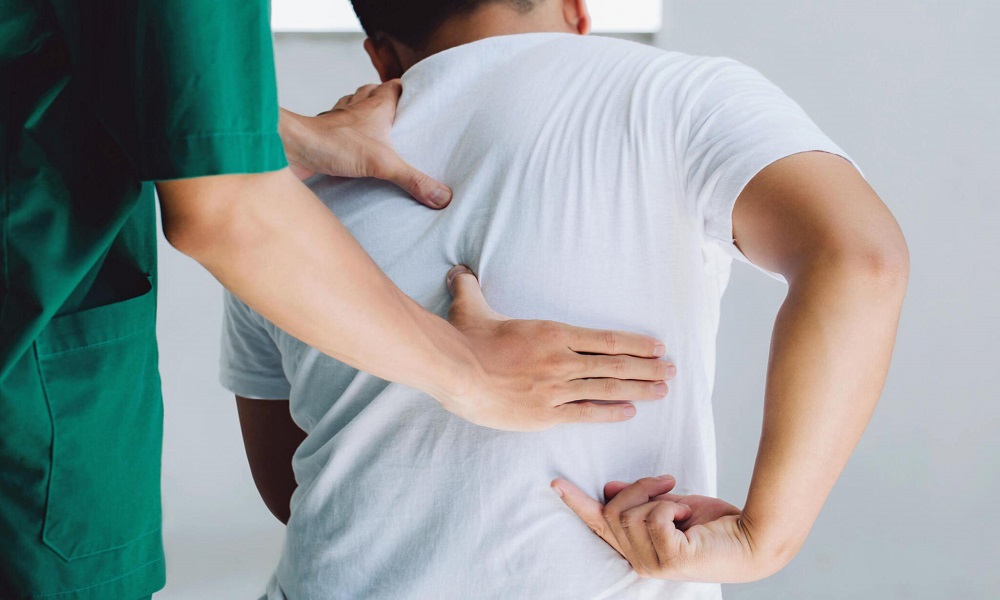Sciatica Treatment In Ayurveda
By: Nimba - January 13, 2024
Sciatica
Sciatica, commonly known as low back pain, is a widespread condition that hinders daily activities. Its annual occurrence globally ranges from 1% to 5%. This condition primarily impacts the sciatic nerve, the body’s largest nerve.
Sciatica in Ayurveda
In Ayurveda, sciatica is known as Gridhrasi, characterized as a vata vyadhi resulting from vata dosha aggravation. Symptoms manifest as pain (Ruk), numbing pain (Toda), and stiffness (Stambha) in the lumbosacral region (Kati Pradesh), radiating from the back to the feet. According to Ayurvedic commentator Arundutta, vata dosha in the tendon (Kandara) causes intense pain when lifting the legs, limiting their free movement. The sciatica diagnosis often involves a straight leg raising test.
Ayurvedic treatments for sciatic pain comprise systematic approaches such as Ama pachana to reduce joint inflammations, Shodhana for eliminating deep-seated toxins, and Brahmana for rejuvenation of damaged parts or cartilages. External treatments like Dhanymaladhara, Abhyanga sweda, Patra pinda potali sweda, Sarvangadhara, Kati Vasti, and specialized internal medications collectively aim to alleviate sciatic pain. Embark on a natural path to relief. Nimba Nature Cure beckons as the best Ayurveda center for Sciatica Treatment in Ahmedabad. Experience holistic healing through authentic Ayurvedic practices. Reclaim your comfort and well-being, book your transformative session now.
Ayurvedic Home Remedies for Sciatica
- Rest: Give your body enough rest by lying on a hard bed or a thick wooden surface. This helps align the spine, reducing back pain.
- Hot or Cold Compress: Apply a hot or cold compress using a clean cloth dipped in hot water or covering ice cubes. Do this 3-4 times a day to alleviate sciatica symptoms.
- Lepa with Ayurvedic Herbal Mixture: Make a thick paste with aloe vera, turmeric powder, Triphala powder, and castor oil. Apply this paste, and tie a bandage to the lower back. It helps reduce local inflammation and sciatic pain.
- Hot Oil Massage: After the acute pain subsides, massage the affected area with castor oil, followed by a mild steam treatment to alleviate pain.
What is Sciatica?
Sciatica is pain resulting from the compression of the sciatic nerve. This condition is linked to lower back pain that extends through the hip and buttocks down to the leg. Sciatica may impact one leg or, in severe cases, both legs. While sciatica causes intense pain, it can be treated with sufficient rest and a proper routine. In severe cases, it may lead to leg weakness and changes in bowel or bladder function, necessitating surgical intervention. Experience relief naturally at Nimba. Opt for our Sciatica Treatment in Ayurveda in Ahmedabad for personalized care and transformative well-being. Book your session for a pain-free tomorrow.
What are the common causes of sciatica?
Herniated Disks: Rupture of the cartilage between spinal vertebrae, compressing the sciatic nerve, and causing lower back pain and limb numbness.
Spinal Stenosis: Abnormal narrowing of the spinal canal, particularly in the lumbar region, exerting pressure on sciatic nerve roots and resulting in pain.
Spondylolisthesis: Extension of a spinal bone that pinches nerves, contributing to sciatic pain, often associated with degenerative disk issues.
Piriformis Syndrome: Involuntary contraction of the piriformis muscle, which, when tightened, pinches the sciatic nerve, leading to sciatica pain. This rare neuromuscular condition can occur after falls, accidents, or prolonged sitting.
What are the risk factors for sciatica disease?
Age: Progressing age contributes to spine changes, increasing the risk of factors like herniated disks and bone spurs.
Obesity: Increased body weight stresses the spine, leading to structural changes and triggering damage to the sciatic nerve.
Occupation: Jobs involving heavy lifting, long drives with heavy loads, or continuous twists and bends to the back elevate the risk of developing sciatica.
Prolonged Sitting: Extended periods of sitting without position changes can be a contributing factor for sciatica.
Diabetes: Diabetes, affecting blood sugar levels, raises the risk of nerve damage, although it’s a relatively rare cause of sciatica.
Pregnancy: Pregnancy is also a potential cause of back pain and sciatica.
It’s important to note that while proper rest can aid recovery without treatment, severe cases may require intervention to prevent permanent nerve damage.
What are the symptoms of sciatica pain?
- Lower back pain
- Radiating pain in the legs, worsening after prolonged sitting
- Hip pain
- Burning or tingling sensations in the legs
- Weakness in the limbs
- Numbness or difficulty moving the leg or foot
- Constant and shooting pain in the legs
Sciatica typically affects one side of the limb, but in severe cases, both legs may exhibit symptoms. The pain extends from the lower back through the back of the thighs and down the leg. The specific location where the sciatic nerve is affected determines whether the pain extends to the legs as well. Discover healing through nature at Nimba, Your sanctuary for Sciatica Treatment in Ayurveda in Ahmedabad. Embrace holistic wellness with our expert Ayurvedic therapies. Take the first step towards a pain-free life, book your consultation now by giving one call to this number: 834731 3333.





